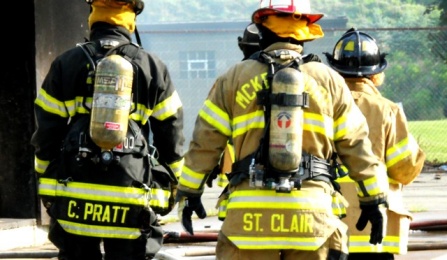Rest and Fitness on Performance and CV Recovery

This study aims to understand the ramifications of longer work:rest ratios for firefighters, as well as the role of fitness on short- and long-term performance/recovery.
Principal Investigator: Dave Hostler, PhD
Funding Agency: FEMA, Assistance to Firefighters Grant Program, Fire Prevention and Safety
Period: 10/2013 - 09/2015
Abstract: Fireground rehab has been extensively studied. However, firefighter physiology beyond the incident (e.g., the next 24 hours) is largely unknown even though many line-of-duty heart attacks occur during this period. The cause of these post-fire deaths may be related both to firefighter fitness and the ratio of work performed to rehab time.
The work:rest ratio (W:R) specified in NFPA 1584 (commonly referred to as the “2-cylinder rule”) is consensus derived and not supported by research data. We have shown that aggressive rehabilitation following 40 minutes of work in thermal protective clothing is not sufficient to allow most firefighters to complete a second bout of work. In spite of this, longer W:R ratios are still prevalent in the fire service.
Using lab and field studies, we will examine the interaction of W:R and fitness on:
- subsequent physical and mental performance
- functional hemostasis (e.g., clotting and clot resolution) measured by thromboelastography
- overnight changes in ECG (e.g., heart rate, QT variability, episodes of non-sustained VT) and overnight blood pressure patterns
We hypothesize that increasing W:R and decreasing fitness impairs subsequent performance and results in persistent physiologic derangements that may alter physiology for up to 24-hours. Furthermore, these changes may be related to line-of-duty heart attacks occurring after fire suppression.
This study benefits the fire service by understanding the ramifications of longer W:R ratios and appreciating the potential alterations in cardiovascular recovery and the role of fitness on short- and long-term performance/recovery.



